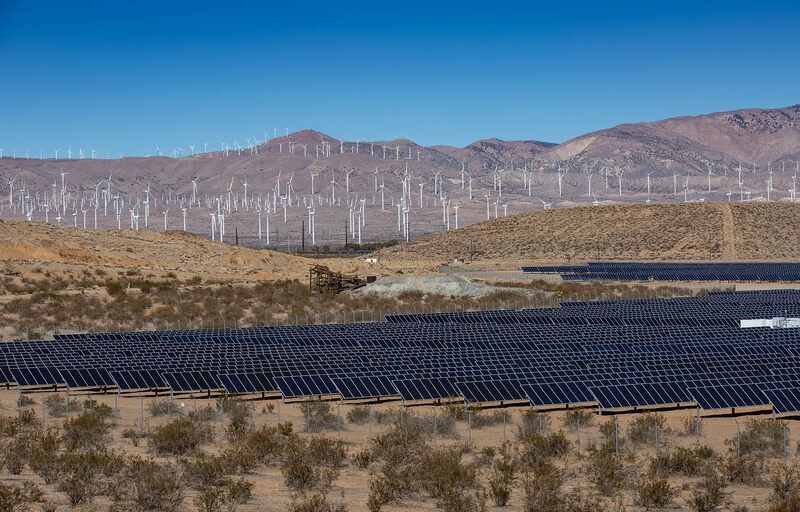The Working Class Isn’t Down with the Green Transition
from Liberal Patriot
Nothing defines the Democratic economic strategy more than a single-minded focus on fighting climate change—an “existential crisis” as Biden, other top Democrats and a galaxy of Democratic-leaning pundits have termed it. In practice this has meant restructuring the economy around “green” industries and a rapid transition to an energy system based around wind and solar. Democratic elites and activists are very, very committed to this approach and are willing to pay high costs to make it happen. In the end, they assert, not only will the existential crisis be averted, but everyone will be happy and prosperous. In the meantime—well, you can’t make an omelet without breaking eggs!
But did anyone ask the working class whether they wanted to sign up in the climate change army? Public opinion data have repeatedly indicated that the climate change issue does not have high salience for these voters and they are not terribly interested in making sacrifices for the cause. Recent data underscore these voters’ lack of commitment.
- In a new Monmouth poll, just one percent of working-class (noncollege) voters in an open-ended question identify climate change as the biggest concern facing their family. On the other hand, half of working-class voters say actions of the federal government in the last six months have actually hurt their family’s main concern; only 9 percent say federal action has helped. And 55 percent of working-class voters believe that “middle-class families” have not been helped at all by Biden’s policies. Hmm…
- The Biden administration is putting on the full court press for electric vehicles. But the working class is not too interested. In a new Gallup poll, just 2 percent of working-class respondents say they currently own an electric vehicle and a mere 9 percent say they are “seriously considering” purchasing one.
- The University of Chicago’s Energy Policy Institute in collaboration with AP-NORC has been doing an annual survey on climate attitudes. This year’s survey finds less, not more, urgency around climate change. Compared to a high point in 2018, there was an 11-point drop in the proportion of Americans overall and among those with a high school education or less saying climate change is caused entirely or mostly by human activity.
- The survey also finds little interest in regulatory moves to phase out gas-powered cars in favor of electric vehicles (EVs). Just 27 percent of Americans favor requiring all new vehicles to be EVs or plug-in hybrids by 2035 as in California and several other states. It is safe to assume that support among working-class voters is less than that modest figure. (The new data do not provide many breakouts by demographic group.)
- Critically, in terms of costs Americans would be willing to absorb to fight climate change, the survey finds that just 38 percent of Americans would be willing to pay even $1 extra on their monthly household energy expenses to combat climate change. That’s the lowest figure since AP-NORC started asking this question in 2016. It’s down 14 points since 2021 and an amazing 19 points since its high point in 2018.
- Extrapolating from analysis I did of the microdata from previous surveys, this suggests that around 30 percent of working-class Americans today would be willing to pay that extra dollar a month to fight climate change. And then when you’re talking about the princely sum of $10 a month, working-class support is probably around 18 percent.
That’s pretty low! I just don’t see how you can get the working class to support a clean energy transition unless it becomes more of a crusade for abundant, cheap, reliable energy and less about the cultural commitment of college-educated Democrats to an economy built around wind, solar, and electric vehicles no matter the cost. The working class is not on board with the latter though it could be interested in the former.
An energy abundance approach would recognize that, in fact, Biden has done the right thing by greenlighting the Willow oil-drilling project in Alaska. Of course, the climate activists and punditocracy are furious and denunciations are pouring in. But this is exactly what working-class voters do want: an “all of the above” strategy that pushes forward renewables while continuing to use a mix of energy sources including fossil fuels. And what they want corresponds to the most practical course in pursuing a clean energy transition while assuring a reliable and secure supply of cheap energy. To go against this approach, as climate activists are pressuring Biden to do, is to accentuate the Great Divide between postindustrial metros and middle America, between Democratic elites and the working class.
Really, it’s madness. Biden needs to do more not less on moving the Democratic Party away from its obsession with renewables. Instead of waxing apoplectic about the Willow project, why aren’t climate activists demanding the radical restructuring of the Nuclear Regulatory Commission? The NRC’s new regulations for next-generation reactors run to 1200 pages and will effectively stymie a desperately needed nuclear renaissance in the country and indeed around the world if allowed to stand. Where are the demonstrations outside NRC headquarters? Instead, crickets as the NRC torpedoes the clean energy source most compatible with an industrial economy.
No wonder the working class doesn’t trust these guys. They’re more committed to their ideology than to their alleged end goals—and certainly than they are to the welfare of the working class.


